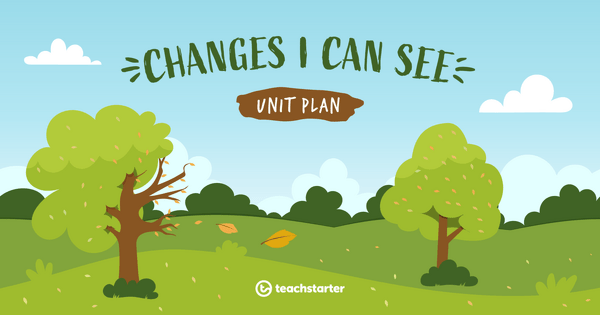Seasons Teaching Resources
Browse printable seasons worksheets, activities and more for teaching about all four seasons and the characteristics of each in your primary classroom.
This collection of teaching resources is aligned with the Australian Curriculum, and each resource has undergone careful review by an expert teacher on the Teach Starter team to ensure they're ready for your classroom. With printable and digital options at hand, you'll save important lesson planning time.
New to teaching about seasons or looking for fresh ideas to engage your students? Read on for a primer from our teacher team!
What Are the Seasons? A Kid-Friendly Definition
To explain what the seasons are to your students, this kid-friendly definition can help:
Seasons refer to the different times of the year when the weather and nature around us change. Each season is associated with different weather conditions, and the seasons each have an effect on the environment, such as changes in plant growth and animal behaviour.
What Are the Four Seasons?
Of course, there are four seasons, but when are they, and what makes them different from one another? These are all questions you're bound to explore with your students this school year.
So let's dive in!
Summer
Summer runs from December 1 to February 28 or 29, and it's the hottest season here in Australia. Many of us spend time at the beach or in a pool because it's so hot!
School is closed for most of the summer as families (and teachers!) enjoy their holidays. Christmas is one celebration that happens during summer.
Autumn
Right after summer is autumn, the season that lasts from March 1 to May 31 and is characterised by mild to warm temperatures and lower humidity.
During the autumn season, there are a number of celebrations and events that occur, such as Easter and Anzac Day.
Winter
Winter lasts from June 1 to August 31. It is the coldest season when we usually wear jackets and jumpers to keep warm. Some parts of Australia even get snow during winter!
Spring
This fourth season lasts from September 1 to November 30. Rainfall usually increases, and we see flowers start to bloom as they come back to life after winter.

What Causes the Seasons to Change?
The changing of the seasons occurs due to the way the Earth moves around the sun and because of how it's tilted on an axis — an imaginary line that runs through the centre of the Earth from the North Pole to the South Pole.
Earth is tilted at an angle of about 23.5 degrees. As the planet orbits around the sun, different parts of Earth receive different amounts of sunlight at different times of the year. When one hemisphere of the Earth is tilted towards the sun, that hemisphere receives more direct sunlight and experiences warmer temperatures. This creates summer in that hemisphere.
When that same hemisphere is tilted away from the sun, it receives less direct sunlight and experiences cooler temperatures. This creates winter in that hemisphere. The opposite hemisphere experiences the opposite season at the same time — so when we have winter in Australia, people in the northern hemisphere experience summer.
During the equinoxes, which occur twice a year, the Earth's axis is not tilted towards or away from the sun. This means that both hemispheres receive about the same amount of sunlight. This creates the seasons of spring and autumn.
What Is an Equinox?
An equinox is a special time of year when the day and night are almost the same length all around the world. This happens twice a year, around 20 March and 22 September. During an equinox, the Earth is not leaning towards or away from the sun, which means that the sun is shining directly over the Earth's equator. During the two annual equinoxes, Australia experiences the seasons of spring and autumn.

